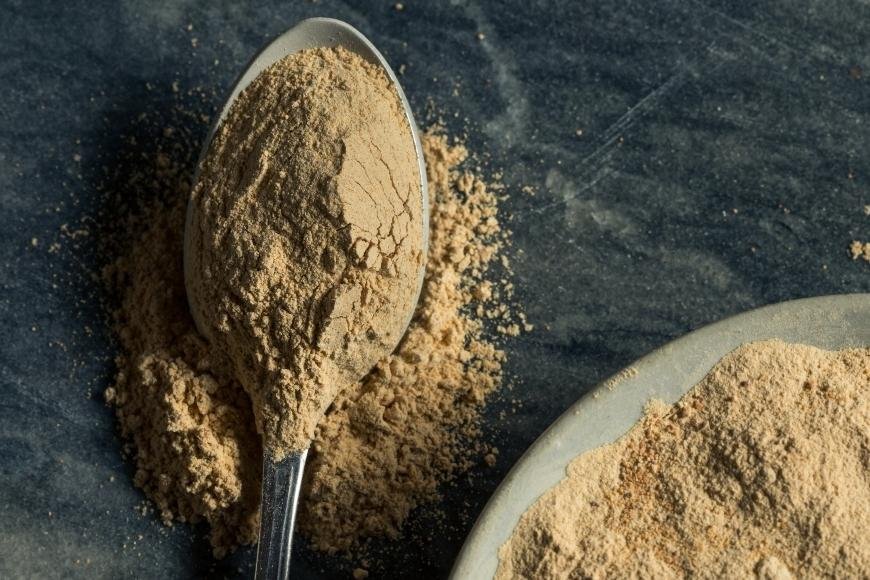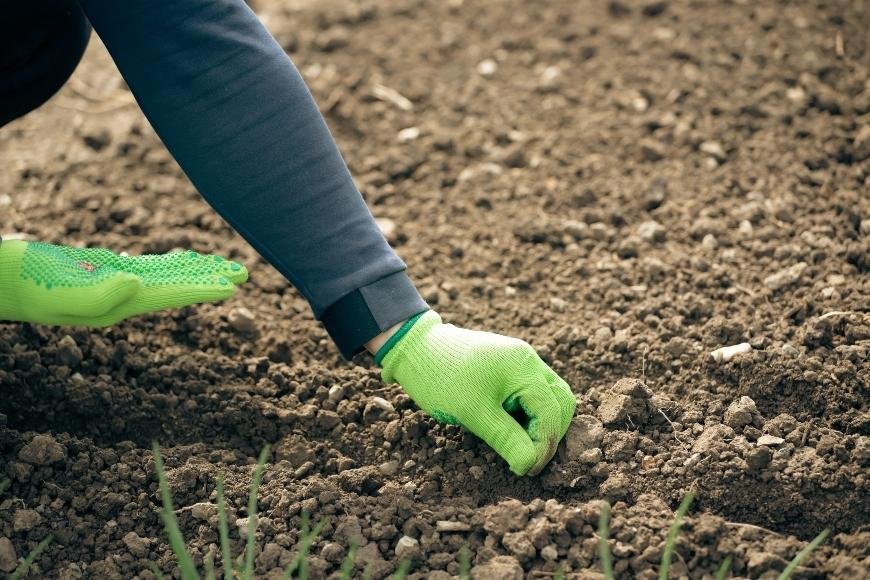How to Grow Maca Successfully at Home
Learn how to grow Maca at home with our comprehensive guide, from choosing the location to harvesting and storing maca roots.

Unleashing the power of nature can be a fulfilling experience, especially when you learn how to grow Maca. This Peruvian ginseng, scientifically known as Lepidium peruvianum, is revered for its tuberous roots that are packed with potent health benefits.
Whether you're interested in red maca or black maca, growing your own fresh maca plants from maca seeds can be an enriching journey. Our guide will take you through every step - from choosing the right location and preparing the soil to planting and caring for your growing maca.
We'll also delve into effective ways of controlling weeds and pests, harvesting your matured maca roots at the peak of their growing season, and storing them correctly to maintain freshness. Dive in to discover how you can cultivate this powerful superfood right in your backyard!
Table of Contents:
- Choosing the Perfect Spot for Your Maca Plants
- Preparing the Soil
- Planting Maca
- Watering and Fertilizing Maca Plants
- Controlling Weeds and Pests
- Harvesting Maca
- Storing Maca Roots
- FAQs in Relation to How to Grow Maca
- Conclusion
Choosing the Perfect Spot for Your Maca Plants
When it comes to growing Maca, location is everything. No matter where you live, these ancient Peruvian plants can still thrive if the right conditions are created. With some careful planning, you can create the perfect conditions for your Maca plants to flourish.
1. Sunlight Exposure
Maca loves the sun, so choose a spot that gets plenty of sunlight throughout the day. Be sure to guard your vegetation from severe meteorological conditions such as gusty winds or downpours. A natural shelter like a wall or fence would be ideal.
2. Temperature Range
Temperature is another crucial factor when growing Maca. These hardy plants are used to cold climates and do best in temperatures between 20-25 degrees Celsius during their growth period and below freezing during their dormant period.
3. Soil Type
Before planting your Maca seeds or seedlings, consider the soil type. Maca prefers well-draining soils rich in organic matter with a pH level between 6 and 7. Home Guides SF Gate offers great tips on how to prepare your soil for planting Maca.
4. Altitude
While it's not always possible to recreate high altitude conditions, it's worth noting that Maca plants do best at elevations above 3,500 meters. If you're not situated at a lofty elevation, cultivating Maca may require extra effort to make sure your plants prosper.
In summary, choosing the perfect spot for your Maca plants involves considering several factors, including sunlight exposure, temperature range, soil type, and altitude. With some careful planning and preparation, you can create the ideal conditions for your Maca plants to grow strong and healthy.
Preparing the Soil
Before growing Maca, it's crucial to prepare the soil properly to ensure optimal growth. Start by testing the soil's pH level using a soil testing kit, which you can find at most gardening stores. Maca thrives best in loose, sandy or loamy soils with a pH between 6 and 7.
Tilling the Soil
Tilling is an essential part of soil preparation for growing Maca. It helps loosen compacted earth and improves air circulation around plant roots, promoting healthier growth. Use a rototiller or spade to till your garden bed about 12 inches deep. After tilling, mix in plenty of aged compost or manure to improve the soil's fertility and drainage properties.
Fertilizing the Soil
Consider incorporating slow-release granular fertilizer into your prepared bed before planting Maca seeds or seedlings. This provides an extra nutrient boost during early stages of growth when they need it most. Opt for a fertilizer high in phosphorus, as this element encourages strong root development. A balanced N-P-K ratio like 10-20-10 would work great here. Refer to package instructions on how much fertilizer per square foot area needs applying since overdoing could harm rather than help plants grow better.
Watering the Soil
After fertilizing, always water thoroughly to help dissolve granules faster, making nutrients readily available quicker. It also prevents possible burn damage caused due to concentrated salts present within them touching directly onto tender plant parts, including leaves and stems.
By following these steps, you'll be well on your way to growing healthy and robust Maca plants.
Planting Maca

Maca is a versatile plant that thrives in specific conditions. Before sowing the seeds or seedlings, ensure you have prepared the soil adequately. Maca seeds are tiny and need to be planted shallowly, about 1 cm deep. You can scatter them on top of the soil or make small holes for each seed.
The spacing between each plant should be around 10-15 cm apart to allow enough room for growth without overcrowding. After placing the seeds, cover them lightly with soil and water gently. Overwatering at this stage can cause rotting or fungal diseases.
If you're using seedlings, dig deeper holes suitable for accommodating the root ball of each young plant. Ensure that they are firmly placed in their new homes before covering up with soil and watering moderately.
It's recommended to sow maca during early spring when temperatures are still cool since it prefers cooler climates. However, if you live in an area where frost is common even during springtime, consider starting indoors under grow lights until weather conditions improve outside.
Patience is key when growing maca from seed as germination takes time - usually anywhere between two weeks up till a month. Don't get discouraged if nothing happens immediately after planting.
Soil Preparation
Prior to sowing maca, make certain the dirt is well-draining and has a pH of 6-7.5. You can add organic matter such as compost or well-rotted manure to improve soil fertility. Avoid using chemical fertilizers as they can damage the delicate root system of maca.
Watering
Maca requires moderate watering, and it's essential not to overwater as this can cause root rot. Water the plants when the top inch of soil feels dry to the touch. During the growing season, maca needs about 1-2 inches of water per week.
Harvesting
Maca is ready for harvest after 7-9 months of growth. The leaves will start to yellow, indicating that the plant is ready. Carefully dig up the roots and remove any soil. After carefully digging up the roots and removing any soil, let them dry in the sun for a few days before storing.
Now that you know how to plant and care for maca, it's time to get started. Happy planting.
Watering and Fertilizing Maca Plants
Maca plants need adequate hydration and nourishment to prosper, but the quantity required is contingent on various conditions such as soil type, climate, and stage of growth.
Watering Maca Plants
Maca plants are native to the Andes mountains in Peru, where rainfall is scarce but groundwater is abundant. Therefore, they have developed a deep root system to tap into underground moisture sources. Deep, infrequent watering is preferable to frequent shallow irrigation in order to avoid root rot and other diseases. A good rule of thumb is to water deeply once a week instead of shallowly every day.
Fertilizing Maca Plants
Maca plants prefer rich soils high in organic matter, so it's recommended to enrich the soil with compost or well-rotted manure before planting. The essential nutrients required for healthy growth are:
- Nitrogen: Promotes leafy green growth for effective photosynthesis.
- Phosphorus: Aids in energy transfer within plant cells, contributing to robust root development.
- Potassium: Helps regulate metabolic activities, including nutrient absorption from the soil, improving overall health and resistance against pests and diseases.
If you notice signs of nutrient deficiency, such as yellowing leaves or stunted growth, consider adding additional supplements throughout the growing season. Proper fertilization and watering are crucial steps towards successful cultivation of this potent superfood known for its numerous health benefits, including boosting energy levels, enhancing fertility, and improving mood.
Controlling Weeds and Pests
Cultivating Maca can be a fulfilling experience, yet it's not without its difficulties. Maintaining a healthy crop requires keeping weeds and pests in check.
Weeds compete with your Maca plants for nutrients, water, and sunlight. Regularly check your garden for weed growth and remove them as soon as possible. A simple hand weeding technique can be effective in controlling these unwanted guests.
Mulching is another method that helps control weed growth by blocking sunlight from reaching the soil surface. Organic mulches like straw or wood chips are excellent choices because they also improve soil fertility as they decompose over time.
Pest Control
Besides weeds, pests pose a significant threat to Maca plants too. Common damaging critters, including aphids, caterpillars, snails and slugs that feed on foliage, can pose a problem for Maca plants.
To manage these harmful creatures naturally, consider using organic pest control methods like introducing beneficial insects (such as ladybugs), using homemade sprays made from natural ingredients (like garlic or hot pepper spray), or even employing physical barriers such as copper tape around your pots or raised beds to deter slugs and snails.
Regular Monitoring
The key to successful pest management lies in regularly monitoring your plants' health status. This allows early detection of any potential problems before they escalate into major issues affecting overall yield quality at harvest time.
Remember: Prevention is always better than cure when it comes to managing both weeds and pests effectively while growing macas successfully.
Harvesting Maca
Harvesting maca is a delicate process that requires careful timing and technique to ensure the highest quality roots. Typically, maca plants are ready for harvest 7-9 months after planting when the leaves start to wilt.
To begin, gently loosen the soil around each plant using a small gardening tool like a trowel or hand fork. Be careful not to damage the root during this process. Once loosened, pull up each plant by its stem, just like you would with other root crops.
After pulling up your maca plants, shake off any excess soil from their roots and trim off their leafy tops, leaving about an inch above the root crown. After harvesting, trim the leafy tops off to about an inch above the root crown to preserve moisture and facilitate cleaning.
Cleaning and Drying
- Cleaning: Rinse your harvested maca roots under cool running water to remove remaining dirt particles, then pat dry with paper towels or let air-dry in a shaded area away from direct sunlight.
- Drying: To further enhance preservation, consider drying your cleaned maca roots either naturally outdoors (if weather permits) or indoors using food dehydrators or ovens set at low temperatures.
- Curing: Some growers also recommend curing dried maca roots by storing them in well-ventilated areas at room temperature for another week before final storage - this helps develop their flavor profiles even more.
In terms of yield expectations, matured single Macas can produce between 1-20 tubers depending on growing conditions. However, average yields usually range around 10 tubers per plant, which collectively weigh roughly half a kilogram (0.5 kg).
Maca's unique adaptability allows it to thrive under harsh Andean highlands where few other crops survive, making it a rewarding crop to grow, especially if done right. So why wait? Start planning your own homegrown superfood garden today.
Storing Maca Roots

Congratulations on growing and harvesting your own Maca roots. Now, it's time to store them properly to maintain their freshness and quality over time.
After harvesting, clean the roots thoroughly under running water to remove any dirt or debris. Allow the roots to dry in a cool, shaded area for several hours.
Freezing Method
If you want to preserve the fresh taste of the root, freezing is an excellent option. Cut the root into small bits and place them in bags suitable for freezing, then put these in the freezer.
Sun-Drying Method
If you prefer drying instead of freezing, sun-drying is a great option. Slice the maca root into thin pieces and lay them out on trays in a sunny spot (around 70-80 degrees Fahrenheit). Let them dry until completely dehydrated, which may take 5-10 days depending on weather conditions.
Oven-Drying Method
The oven-drying process involves slicing the maca root into thin pieces and spreading them out onto baking sheets lined with parchment paper. Set the oven to its lowest temperature setting (around 150 degrees Fahrenheit) and let them bake for about six hours until fully dried.
Whether you use frozen or dried maca root later on depends largely on what kind of recipe you're planning. Frozen ones work great in smoothies, while dried ones can be ground into powder form and used widely across various cuisines worldwide.
Store your Maca roots in a container that seals tightly, keeping them cool and dry for maximum freshness.
FAQs in Relation to How to Grow Maca
How to Grow Maca: Tips for a Successful Harvest
If you're interested in growing your own maca, there are a few things you should know to ensure a successful harvest.
- Choose a location with well-draining soil and plenty of sunlight.
- Plant maca seeds in the spring, after the last frost.
- Water regularly, but be careful not to overwater.
- Harvest the roots after 7-9 months, when they have reached maturity.
With a little patience and care, you can enjoy the benefits of fresh maca root straight from your own garden.
Conclusion
Growing Maca can be an exciting adventure for young adults interested in experimenting with drugs. Choose the right location, prepare the soil, water and fertilize regularly, control pests, harvest at the right time, and store your Maca roots correctly to ensure a thriving crop. With these tips, you'll soon have a powerful plant ready for use! Don't forget to check out credible sources for more information on growing Maca.






































































































































